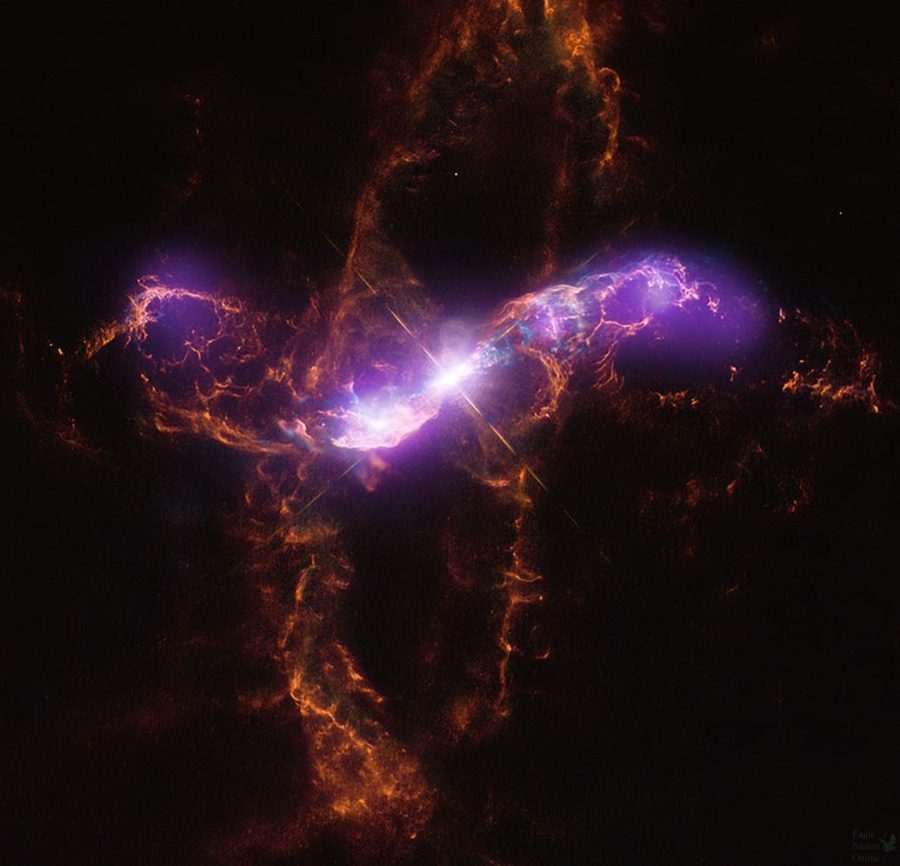Analysis: Strides in space – NASA shares latest achievements
Focusing past the air pollution, junior Kalyani Rao captures the night sky from August 10 2021. “I got incredibly lucky to end up with a photo that showed off the stars in such an incredible manner,” Rao said. “I saw a TikTok video on how to take really good photos of the night sky – you just need to have a good camera and know how to edit the exposure and black point. I just turned up the exposure, black point, and contrast until the outlines of the stars started to show. I was beyond excited that it actually worked, since it’s hard to get good amateur photos of the stars now because of air pollution.”
First photos of Venus’ surface
NASA’s Parker Solar Probe took its first visible-light images of the surface of Venus from space on Feb. 9. Previously, researchers failed to get high-quality photos of Venus due to the heavy clouds covering the surface.
Parker used its Wide-Field Imager to take photos in wavelengths of the visible spectrum – the type of light that the human eye can see – and extending into near-infrared.
The images shown in the video above reveal distinctive features of the planet’s surface, like continental regions, plains and plateaus. A luminescent halo of oxygen in the atmosphere can also be seen surrounding Venus.
“We’re thrilled with the science insights Parker Solar Probe has provided thus far. Parker continues to outperform our expectations, and we are excited that these novel observations can help advance Venus research,” said Nicola Fox, division director for the Heliophysics Division at NASA Headquarters in an interview with NASA.gov.
Venus is regarded as Earth’s “twin” planet, since both share a similar size, geographic similarities, chemical composition and an atmosphere with a complex weather system. The key difference between the two planets is that Venus’ surface is made up of toxic clouds and no water, which leads to the question of why Earth is hospitable for life – while Venus is not.
“Venus is the third brightest thing in the sky, but until recently we have not had much information on what the surface looked like because our view of it is blocked by a thick atmosphere,” Brian Wood, a physicist at the Naval Research Laboratory, said in a press statement from NASA.gov. “Now, we finally are seeing the surface in visible wavelengths for the first time from space.”
Largest telescope in history sent into space, replacing the Hubble
The James Webb Space Telescope is 100 times as powerful as the Hubble, and, on Dec. 25, NASA launched the Webb from French Guiana, in partnership with the European Space Agency and the Canadian Space Agency.
NASA’s newest launch program has promised to “transform how we study the deepest depths of the universe.” With a 21-foot wide mirror, the Webb telescope will be able to gather infrared light from past galaxies that are up to 13.6 billion light-years old, traveling through space and time to see these distant clusters as they were 13.6 billion years ago.
“Those first science images, of course, are taken to be beautiful, stunning, amazing images,” Amber Straughn, the deputy project scientist at NASA’s Goddard Space Flight Center said in a statement during the James Webb Space Telescope Night at the NASA Goddard Visitor Center. “I myself can’t wait to see what they look like.”
Final moments of a dead star seen for the first time
Observations made by the NASA Chandra X-ray Observatory show a dead planet crashing into its destroyed sun, a white dwarf star, 44 light-years from Earth. A white dwarf is the remains of a sun-like star, after shedding its outer layers and leaving behind only the core.
This is the fate that could be awaiting the planets, moons and asteroids in the solar system in a few billion years, including Earth. Most stars, and planetary systems, will end up like G 29-38, turning into a white dwarf, with over 300,000 discovered in the Milky Way alone.
Rocket to retrieve materials from Mars in Mars Sample Return program
NASA’s Mars Sample Return Campaign aims to broaden the understanding of Mars by bringing selected samples for study back to Earth. The campaign would fulfill a solar system exploration goal, a high priority since the 1970s and in the last two National Academy of Sciences Planetary Decadal surveys.
“This groundbreaking endeavor is destined to inspire the world when the first robotic round-trip mission retrieves a sample from another planet – a significant step that will ultimately help send the first astronauts to Mars,” NASA Administrator Bill Nelson said, according to Fox 35 Orlando. “America’s investment in our Mars Sample Return program will fulfill a top priority planetary science goal and demonstrate our commitment to global partnerships, ensuring NASA remains a leader in exploration and discovery.”
New photos of celestial light
Data from NASA’s Chandra X-Ray Observatory reveals vivid images of different features of the galaxy. Cassiopeia A is one of the brightest radio sources in the sky, and has been a popular target of study for radio astronomers for decades. X-ray data from Chandra shows jets of hot gas from a white draft striking surrounding material of R Aquarii and creating massive shock waves, similar to sonic booms from supersonic planes.
NASA, the National Aeronautics and Space Administration, is an independent agency of the U.S. government responsible for civilian space programs, as well as aeronautics and space research. NASA was established in 1958 and is responsible for advancing space technology in the United States.
Your donation will support the student journalists of Prosper High School. Your contribution will allow us to purchase equipment and cover our annual website hosting costs.

Honors, Experience and Awards:
5 Best of Sno publications.
5th place in Copy Editing, district UIL meet 2021
Honorable mention- Podcast interview, 2021 TAJE Fall Fiesta
UIL Journalist 2020-2021, 2021-2022
Quill and Scroll Society member 2021-2022
1st place in Copy Editing for CENTEX UIL meet 2021-2022
3rd place in Copy Editing for Aubrey UIL meet 2022
2nd place in Copy Editing for NorTex UIL District meet 2022
National Silver award for poetry from the Scholastic Art & Writing organization
National Recognition Award from College Board
AP Scholar with Distinction Award
2 Best in Texas News & Broadcast Awards, 2022: Personal Opinion Column- Honorable Mention, News Story- Honorable Mention
President of the Classic Book Club, 2020-onwards
Member of the National Spanish Honors Society (NSHS)
PHS Award for Academic Excellence in Newspaper II, 2022
Dean’s Scholarship for Cornell University Pre -College Program
Sibley Scholarship for Brown University Pre -College Program
CIEE Global Navigator Scholarship













